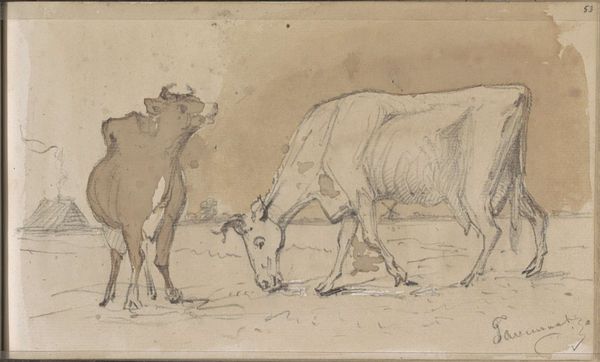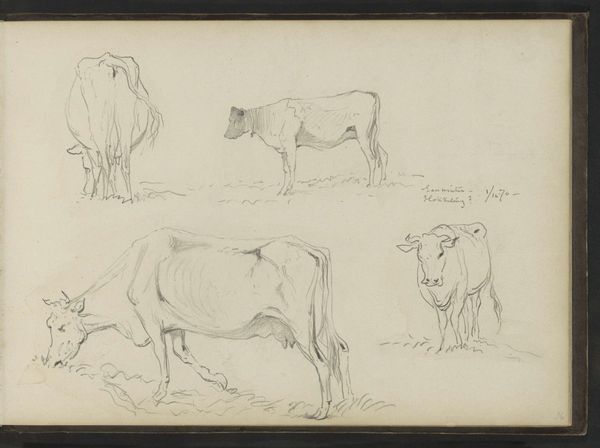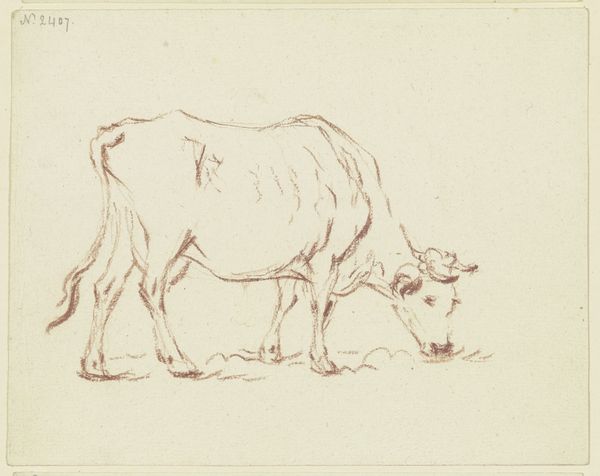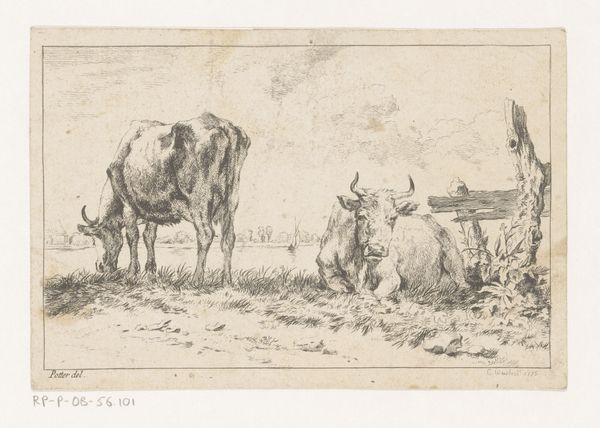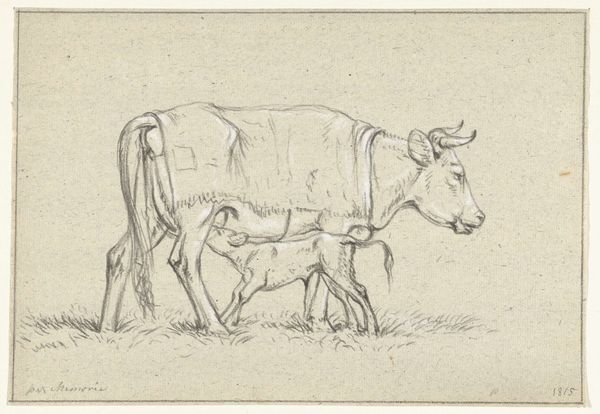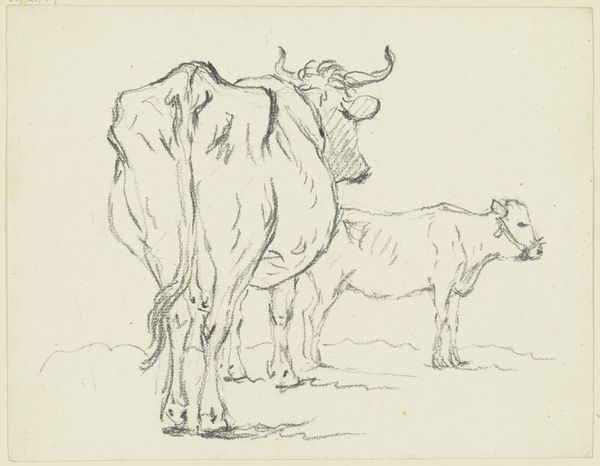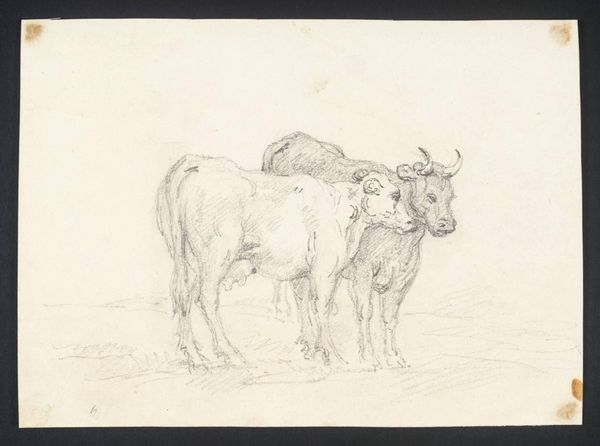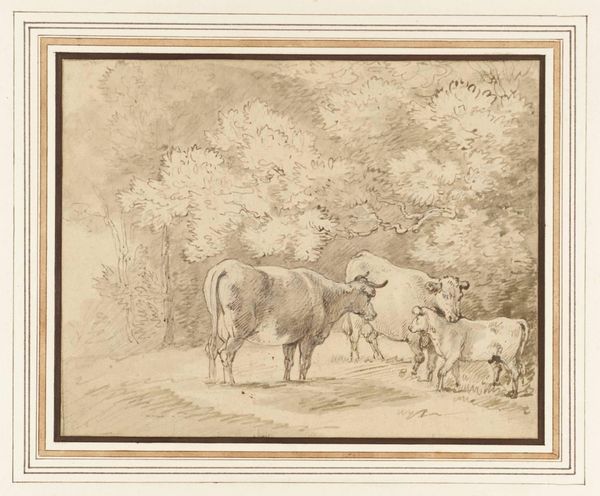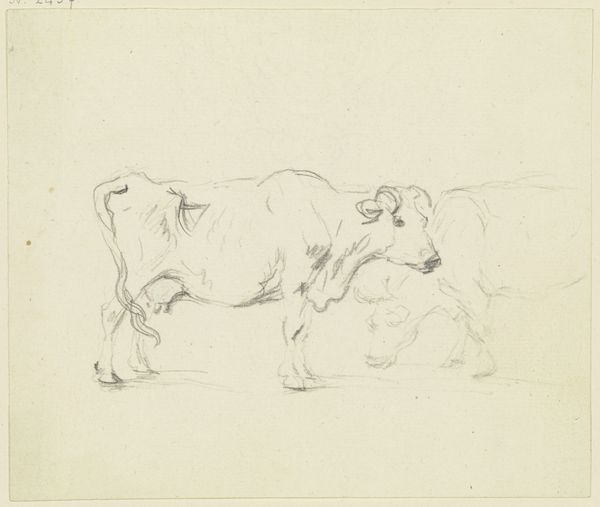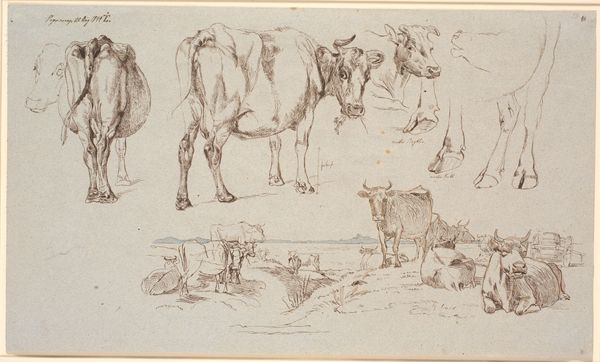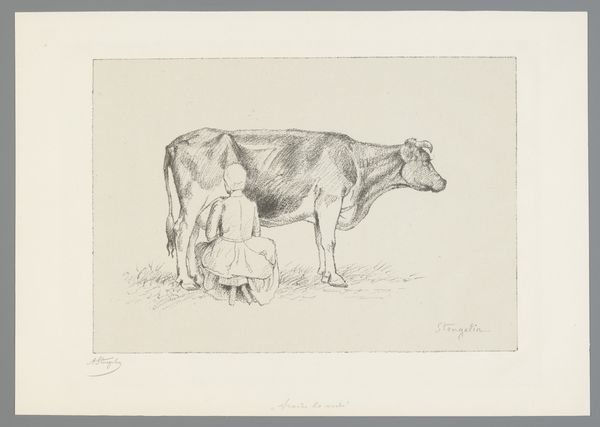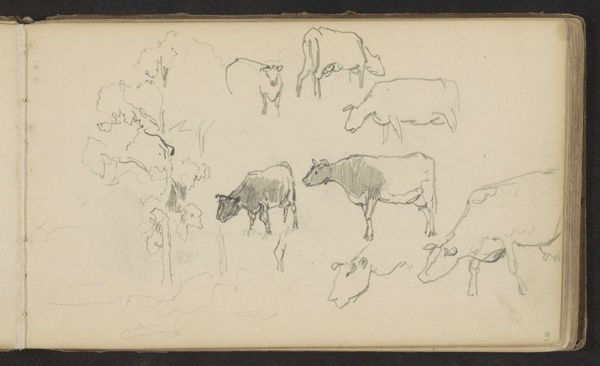
drawing, paper, pencil
#
drawing
#
imaginative character sketch
#
toned paper
#
quirky sketch
#
pencil sketch
#
incomplete sketchy
#
landscape
#
figuration
#
paper
#
personal sketchbook
#
ink drawing experimentation
#
pen-ink sketch
#
pencil
#
sketchbook drawing
#
genre-painting
#
sketchbook art
#
realism
Copyright: Rijks Museum: Open Domain
Editor: Here we have "Boer die een koe melkt," or "Farmer Milking a Cow," a pencil and ink drawing on paper by Johannes Tavenraat, created around 1870. It feels very immediate, like a page torn from a sketchbook, capturing a simple, rural scene. What jumps out at you when you look at it? Curator: I see a deliberate engagement with the materials at hand. Tavenraat isn’t just representing a scene; he's showing us the *making* of an image. Notice the varied pencil strokes, the unfinished areas. It’s less about idealized pastoral life, more about the artist’s labor, his process of observation and recording. Where do you think this was sketched, and for whom? Editor: Possibly outdoors? Or from memory perhaps? The sketches have that feel of quick, on-the-spot observation. I hadn’t really considered the labor aspect though. Curator: Think about the dairy industry at that time, the rise of industrial agriculture. Even a seemingly simple drawing like this, focusing on the interaction between the farmer, the cow, and milk, speaks to broader societal shifts, and consumerism of a new emerging middle class. Tavenraat's work then serves as commentary, doesn’t it? Do you feel that, by calling it art and putting it in a museum, this elevates what seems like the labor of production? Editor: That’s interesting. I guess it does transform something so practical, part of everyday life, into something… elevated, worthy of attention and analysis. Almost transforming it, by definition of exhibition, into a social statement, right? Curator: Exactly. The materials themselves – pencil, ink, paper – were becoming increasingly accessible thanks to industrial production. So, the act of creating this drawing, and how accessible the art itself has become to everyday buyers speaks to how the meaning is constructed in his artistic era. It becomes something that speaks for labor beyond farming and extends to his own, then to those viewing the art in today's era. Editor: I never thought about a drawing like this having such layers of social commentary and considering process and access so directly. Curator: Thinking about the context of making and how the availability of materials shapes artistic expression, transforms our perspective on everyday scenes like this, doesn't it?
Comments
No comments
Be the first to comment and join the conversation on the ultimate creative platform.
